

Goods and Services Tax (GST) was introduced in India with much fun and fare and ceremoniously on the midnight of 30th June and 1st July of 2017, almost four years now. While it was considered to be the most important tax reform of independent India, it has misfired on various counts. India shifting from a multi indirect tax regime to a so called one tax (GST) regime was initially like a dream coming true in 2017. However, it was not to be so, as much hyped about.
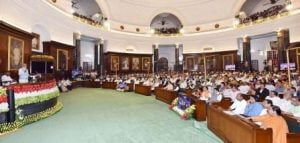
First and foremost, the timing itself was not so perfect and it appears as if it was imposed upon in a hurry. Had its implementation been delayed by six months or so, it would have given enough elbow room to its back bone, GST Network (GSTN) to improve upon and test its functionalities. GSTN even today is in improve – trial – test mode causing lot of hardships to itself and all other stakeholders.
GSTN has become the most criticized organ of GST eco-system, though it is the nucleus of GST frame work. Role of GSTN, its capacity and competency should be reviewed. GSTN should be made more and more taxpayers & professional friendly which facilitates compliances on its own.
What are the pain areas in GST today, even after four years of its implementation can be enumerated in the following list (not exhaustive). These ought to be understood and efforts made to address the issues. There are both, macro level policy issues as well as micro level operational concerns which keep bothering the government, tax collectors, professionals, tax payers and even the judiciary of the country.
A) Macro Concerns
• GST Council –GST Council is a federal constitutional body representing the centre and all State / UT Governments. GST Council is the apex decision making body for GST but it is now taking shape of a political forum.
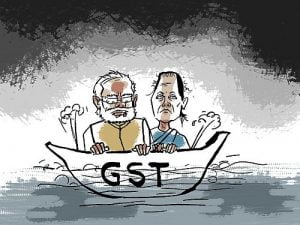 Frequency of GST meetings has been erratic so far. There are 44 meetings so far with uneven gaps (one week to seven months). GSTC’s sub committees may also be purely from GSTC members only, not officials.
Frequency of GST meetings has been erratic so far. There are 44 meetings so far with uneven gaps (one week to seven months). GSTC’s sub committees may also be purely from GSTC members only, not officials.
The decision making needs to be reviewed. There is a demand for the position of Vice-Chairman and more transparency in its functioning and decision making. It ought to be democratic, objective and in public / national interest.
• GST Model – The present structure of GST is of so called one-nation-one-market – one tax which is theoretical only as it practically operates on a three – tax model of CGST, IGST and SGST operating as water tight compartments. It has multiple legislations, rules, regulations and tax administration.
• Conflict between state/UT and Central Tax administration – There is always conflict of interest and interference among the Governments. Even State Governments, particularly ruled by different political parties clash with central government and issue their own circulars.
• Rationalization of provisions– There is a need to revisit provisions and rules and make them more harmonious, practical and logical (for example on input tax credit).
• Tax slabs – There are too many tax slabs which need to be narrowed down. Presently five tax rates exist, i.e., 0%, 5%, 12%, 18% and 28% besides composition rates and compensation cess. These tax rate could be reduced to just three by merging 5 and 12 and / or 12 and 18% slabs.
• Compensation Cess – To have all states on board when GST was introduced, GSTC assumed and resolved to allow a growth rate in tax revenue @ 14 percent on the basis of which GST compensation cess was agreed to.
Infact, the very basis of compensation cess, i.e., assumption of tax growth @ 14% itself was faulty which lead to the biggest issue of fiscal mis-management in GST today. In 2019-20 and 2020-21, Union Government has to meet out the shortfall in GST revenue in the form of Compensation Cess by way of borrowing.
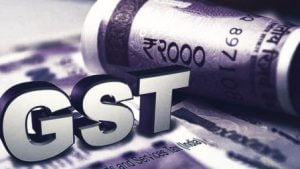 This is bound to expand like a balloon and may become unmanageable in future if not addressed now. States will also have to rethink that 14% growth is unrealistic and it ought to be revisited. Actual GDP of the country or any of the state is neither growing at a rate near 14% nor it can be expected in present Covid hit economy to grow even in double digits in next 2-3 years.
This is bound to expand like a balloon and may become unmanageable in future if not addressed now. States will also have to rethink that 14% growth is unrealistic and it ought to be revisited. Actual GDP of the country or any of the state is neither growing at a rate near 14% nor it can be expected in present Covid hit economy to grow even in double digits in next 2-3 years.
The compensation cess by way of borrowing is a cost to the nation and a burden on citizens and taxpayers. It must be appropriately addressed, sooner the better. Compensation cess can not be continued forever, but it appears from the present day attitude of states.
• Professionals – GST law and procedure has become more like a mechanical piece of legislation. Professionals and tax payers have been reduced to mechanical clerks rather than applying their intellect for tax interpretation and compliances. This has to be reversed by way of making GSTN more and more taxpayers and professional friendly which facilitates compliances on its own and allowing professionals to render hassle free value added knowledge based services.
• Mutual Trust – There is a trust deficit between tax collectors and taxpayers / professionals. Mutual trust holds the key to efficient tax collection and management. Once this is done, it will also result in reduction in frauds, arrests and investigations. This, however, does not imply that cases of tax evasion should not be dealt with strictly. Tax evaders ought to be punished hard and in an exemplary manner to discourage others to desist from indulging in any sort of tax evasion, tax avoidance and frauds.
• Provisional attachment – The provision for provisional attachment of bank accounts and property in GST is contained in section 83 of CGST Act, 2017 and is one of the widely used tool by the revenue authorities to recover the amount forcefully. The practice has been to freeze bank accounts and attach the properties even before adjudication and determination of tax liability. Such attachments are however, subject to judicial scrutiny and in majority of cases, courts have ordered to release the attachments. Such powers ought to be resorted to with caution and in rarest of cases where taxpayer is a habitual offender and recovery is doubtful.
• Inclusion of left out sectors – Presently GST excludes from its scope a major portion of our GDP represented by sectors like real estate, powers / electricity, petroleum gases and alco-beverages. This have its own pitfalls and negative multiplier effect on businesses and economy. Sincere efforts are required in this direction to bring consensus and move forward.
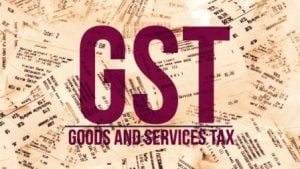 • Transition – Even as we look at GST as four year old law, many assessees still suffer from the technical / legal glitches in transition from old regime to new GST regime. Though more than 1400 days have passed, GSTC / CBIC should come out with a one final opportunity to address and settle all such cases so that no transition is due, say after three(3) months. It appears that transition provisions will always be on statute book as it has proved to be an ongoing process. Even, courts the burdened with transition disputes.
• Transition – Even as we look at GST as four year old law, many assessees still suffer from the technical / legal glitches in transition from old regime to new GST regime. Though more than 1400 days have passed, GSTC / CBIC should come out with a one final opportunity to address and settle all such cases so that no transition is due, say after three(3) months. It appears that transition provisions will always be on statute book as it has proved to be an ongoing process. Even, courts the burdened with transition disputes.
• Anti-profiteering– provision in section 171 of the law is a welcome provision following few countries experience. However, it has become another battle ground with vague rules and no clear procedures. The officers and bureaucrats are from same cadre and work without any professional approach.
It is a very specific function and provision and we need to have experts for adjudication and determining what is profit and what is anti-profit. Moreover, a practical approach is called for.
• Amendments Galore– GST law has become a law of amendments and a memory check test case for professionals. Multiple and too frequent amendment distort the law and rules and lead to confusions and wrong interpretations. One need to remember dates, changes and rates based on time period. There ought to be some discipline by CBIC / GSTC on this. We can fix timelines for amendments in rates, rules, forms etc as first day of every quarter so that there are only four major amendments in a year. Of course, there can be no bar on urgent amendments.
• Input tax credit – Seamlers and flaw less input tax credit is considered to be the most important benefit of GST but it has failed all its promises. Input tax credit (ITC) in GST is subject to so many ifs and buts, restrictions, procedures, formulae, interpretation and the understanding and mood of the officials.
ITC has become one of the most litigation prone subject. In many cases, tax cascading continues and the ITC is a distorted ITC which was not visualized in original scheme of things. Section 17 and rules 36 and 84 need to be rationalized and credit should be allowed in totality, if in course of business or for furtherance of business.
• Appellate Tribunal – Today even after four years of GST in force, we don’t have any bench of Appellate Tribunal constituted under GST law as it is stuck with a court stay on appointment of members. As a result, first appeal adjudications are piling up and assessees are forced to file petitions in court. There are delays in adjudication and first appeal orders. This must be sorted out at the earliest with intervention, if any, required from Central Government or Apex Court.
• Revocation of Surrender of Registration – GST registration is a mandatory requirement. The cancellation of registration on the part of tax authorities causes undue hardship on the registered persons so much so that it hampers their right to carry on business. Revocation of cancellation of registration is provided for now but it makes the things complicated. Why to cancel the same in first place ? The tax authorities must exercise caution in cancelling the registration. So far, this number runs into few lakhs. Better be avoided and used only in deserving cases.
• Refund under Inverted Duty Structure – Section 54(3) read with Rule 89 provides for a provision to seek refund in case of accumulated input tax credit where duty on output supplies is less than that on inputs supplies subject to certain conditions. While rules restrict the refund by interfering with the main provision, retrospective amendment in rules cause hardship to taxpayers in many cases, that too denying the refund of credit from retrospective effect w.e.f. 1.7.2017.
• Advance Ruling – Authority for Advance Ruling (AAR) and appellate forums (AAAR) need to be more independent and transparent. Departmental officers often pronounce rulings with pre-fixed pro-revenue mine set not providing justice and guidance to those who seek rulings.
• Compliances – The present GST regime suffers from multiple and too many compliances in the form of returns and information.
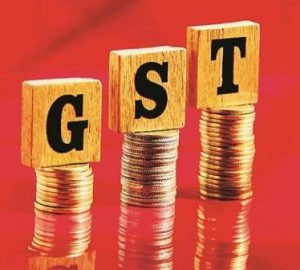 • No new state taxes – For present and future tax regime, GSTC should ensure that no state should be allowed to levy any new local or state taxes, as they keep on saying the same.
• No new state taxes – For present and future tax regime, GSTC should ensure that no state should be allowed to levy any new local or state taxes, as they keep on saying the same.
• Change in mind set – Last but not the least, without disrespect to any one, there is also a need to change and improve upon the mind set, attitude, and level of understanding of tax officials, be it at state level or at central level.
B) Operational / procedural issues
Presently GST procedures / GSTN functioning is plagued with following pain areas :
1) Revision in GST returns is long overdue. Form 3B which was a stop gap arrangement appears to be a permanent feature now
2) Rationalization of GST rules on input tax credit and section 17(5)
3) B2B invoicing for all businesses to be adopted
4) Reduction in number of various GST returns
5) Reduction in frequency of filing various GST returns
6) Increasing threshold limit for exemption
7) Making scope of ‘aggregate turnover’ more rational and objective
8) E-way bill regime to be made taxpayer friendly by making it more practical
9) Powers of confiscation / detention of goods and vehicle in movement to be sparingly used. Large number of writ petitions and decisions in assessee’s favour is only indicative of this.
10) Use / misuse of power to issue summons to be more objective and less used rather than for harassment and in routine.
11) Late fees and penalties to be rationalized
12) The scope of reverse charge mechanism may reviewed and infact withdrawn with high number of registered persons.
These are only some of the thoughts which need an immediate attention of GSTC /CBIC in the overall interests of tax administrators and governments. ![]()
Also Read: ‘Why I am a Covid vaccine skeptic’ – Prashant Bhushan
___________________________________
Watch video:

Disclaimer : PunjabTodayTV.com and other platforms of the Punjab Today group strive to include views and opinions from across the entire spectrum, but by no means do we agree with everything we publish. Our efforts and editorial choices consistently underscore our authors’ right to the freedom of speech. However, it should be clear to all readers that individual authors are responsible for the information, ideas or opinions in their articles, and very often, these do not reflect the views of PunjabTodayTV.com or other platforms of the group. Punjab Today does not assume any responsibility or liability for the views of authors whose work appears here.
Punjab Today believes in serious, engaging, narrative journalism at a time when mainstream media houses seem to have given up on long-form writing and news television has blurred or altogether erased the lines between news and slapstick entertainment. We at Punjab Today believe that readers such as yourself appreciate cerebral journalism, and would like you to hold us against the best international industry standards. Brickbats are welcome even more than bouquets, though an occasional pat on the back is always encouraging. Good journalism can be a lifeline in these uncertain times worldwide. You can support us in myriad ways. To begin with, by spreading word about us and forwarding this reportage. Stay engaged.
— Team PT


Copyright © Punjab Today TV : All right Reserve 2016 - 2024 |